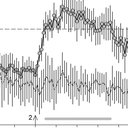Drug-induced liver injury following a repeated course of ketamine treatment for chronic pain in CRPS type 1 patients: a report of 3 cases.
Palavras-chave
Resumo
Studies on the efficacy of ketamine in the treatment of chronic pain indicate that prolonged or repetitive infusions are required to ensure prolonged pain relief. Few studies address ketamine-induced toxicity. Here we present data on the occurrence of ketamine-induced liver injury during repeated administrations of S(+)-ketamine for treatment of chronic pain in patients with complex regional pain syndrome type 1 as part of a larger study exploring possible time frames for ketamine re-administration. Six patients were scheduled to receive 2 continuous intravenous 100-hour S(+)-ketamine infusions (infusion rate 10-20mg/h) separated by 16 days. Three of these patients developed hepatotoxicity. Patient A, a 65-year-old woman, developed an itching rash and fever during her second exposure. Blood tests revealed elevated liver enzymes (alanine transaminase, alkaline phosphatase, aspartate transaminase, and γ-glutamyl transferase, all ≥ 3 times the upper limit of normal) and modestly increased eosinophilic leukocytes. Patient E, a 48-year-old woman, developed elevated liver enzymes of similar pattern as Patient A during her second ketamine administration and a weakly positive response to antinuclear antibodies. In a third patient, Patient F, a 46-year-old man, elevated liver enzymes (alanine transaminase and γ-glutamyl transferase) were detected on the first day of his second exposure. In all patients, the ketamine infusion was promptly terminated and the liver enzymes slowly returned to reference values within 2 months. Our data suggest an increased risk for development of ketamine-induced liver injury when the infusion is prolonged and/or repeated within a short time frame. Regular measurements of liver function are therefore required during such treatments.


